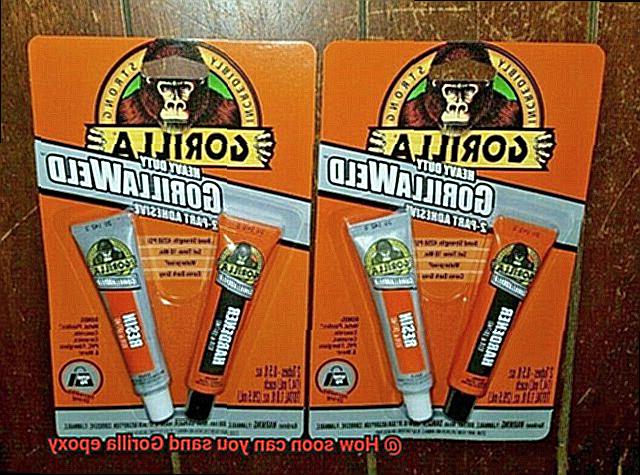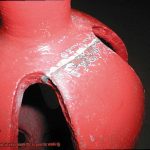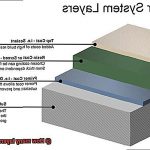Have you ever found yourself wondering about the perfect timing for sanding Gorilla epoxy? If you’re a DIY enthusiast, then you know that achieving a smooth and polished finish is crucial. But sanding too soon can ruin all your hard work, leaving you with an uneven surface. So, when is the right time to start sanding?
Gorilla epoxy is a two-part adhesive that can bond various surfaces like metal, wood, plastic, ceramic, and more. It’s a sturdy and durable adhesive that can be sanded, drilled, and painted once it has cured. However, sanding it too soon or waiting too long can make it challenging to achieve the desired result.
In this blog post, we’ll explore the timing and techniques for sanding Gorilla epoxy. We’ll guide you through the dos and don’ts of sanding this adhesive to ensure that your project looks professional and polished.
Timing is key when it comes to sanding Gorilla epoxy. You might feel tempted to start sanding as soon as the epoxy has dried up but hold your horses. Sanding too early could lead to an uneven surface that ruins the final finish. On the other hand, waiting too long will make it difficult to sand down the epoxy.
In summary, finding the right timing and technique for sanding Gorilla epoxy can make all the difference in achieving a professional-looking finish. Stay tuned for our upcoming blog post where we’ll share some pro tips on how best to approach this process.
Understanding the Factors that Affect Sanding Times
Contents
- 1 Understanding the Factors that Affect Sanding Times
- 2 Manufacturer’s Instructions for Sanding Times
- 3 General Guidelines for Sanding Gorilla Epoxy
- 4 Benefits of Waiting at Least 72 Hours Before Sanding
- 5 Potential Risks of Sanding Too Soon
- 6 Taking Necessary Precautions When Sanding Gorilla Epoxy
- 7 Conclusion
Sanding is a crucial step in any epoxy project, but when it comes to Gorilla epoxy, understanding the factors that affect sanding times is essential. Here are some key factors to consider:
Type of Gorilla Epoxy:
Different types of Gorilla epoxy have different curing times, which affects sanding times. For instance, Gorilla 5 Minute Epoxy cures quickly and can be sanded sooner than other types. It’s critical to read the label carefully and follow manufacturer instructions for each type.
Environmental Conditions:
Temperature and humidity levels also play a vital role in determining sanding times. Higher temperatures and lower humidity levels accelerate the curing process, while cooler temperatures and higher humidity levels slow it down. Therefore, you need to take into account the environment in which you’re working to determine a safe and effective sanding timeline.
Size and Shape of Surface:
The size and shape of the surface being sanded can also affect sanding times. Larger surfaces may take longer to cure fully, while smaller surfaces may cure more quickly. Additionally, surfaces with complex shapes or contours may require more time to cure fully in order to ensure that all areas are fully cured and ready for sanding.
Protective Gear:
It’s worth noting that sanding can generate dust particles that can settle on the uncured epoxy, affecting its appearance and adhesion. Therefore, it’s crucial to take precautions when sanding and wear protective gear such as gloves, goggles, and a mask.
Manufacturer’s Instructions for Sanding Times
If so, then you know that sanding is a critical step in achieving a smooth, polished finish. But did you know that following the manufacturer’s instructions for sanding times is crucial for your project’s success? Let’s dive deeper into why it’s essential to follow these guidelines and offer some tips for ensuring a flawless finish.
First and foremost, the manufacturer’s instructions for sanding times will vary depending on the type of Gorilla epoxy you’re using and how you apply it. These instructions are not mere suggestions but rather a crucial part of the process. Ignoring them can lead to a less polished finish and even damage to the surface. Therefore, it is imperative to read and understand these guidelines before attempting to sand the epoxy.
Typically, most manufacturers recommend waiting at least 24 hours before attempting to sand Gorilla epoxy. This period allows the epoxy to fully cure and reach its maximum strength. Attempting to sand the epoxy before it is fully cured can result in a rougher, less desirable finish. So patience is key when working with any epoxy.
However, curing times vary depending on environmental factors such as temperature and humidity. Higher temperatures and lower humidity can speed up the curing process, while lower temperatures and higher humidity can slow it down. This means that it’s worth keeping an eye on these factors and adjusting your wait time accordingly. Rushing through this step can ruin all your hard work.
In addition to following the recommended wait time, taking proper safety precautions when sanding Gorilla epoxy is critical. Protective gloves, goggles, and a mask are mandatory to prevent inhaling any dust or particles. Safety should always be a top priority when working with any chemicals or materials.
General Guidelines for Sanding Gorilla Epoxy
If you’re looking to achieve a smooth and polished finish on your Gorilla Epoxy project, then you need to follow some general guidelines for sanding. Don’t worry, we’ve got you covered.
First things first, make sure that the epoxy has cured completely before sanding. Depending on the temperature and humidity levels of your environment, this can take up to 24 hours. It’s crucial to give the epoxy enough time to cure fully, so exercise patience.
Once the epoxy is fully cured, it’s time to grab some fine-grit sandpaper, such as 220 grit or higher. Begin by lightly sanding the surface in circular motions to remove any bumps or imperfections.
Before getting started, remember to wear protective gear such as gloves and a mask while sanding. The dust from sanding can be harmful if inhaled, so take precautions. Additionally, keep your sandpaper clean and free of debris to achieve a smooth finish.
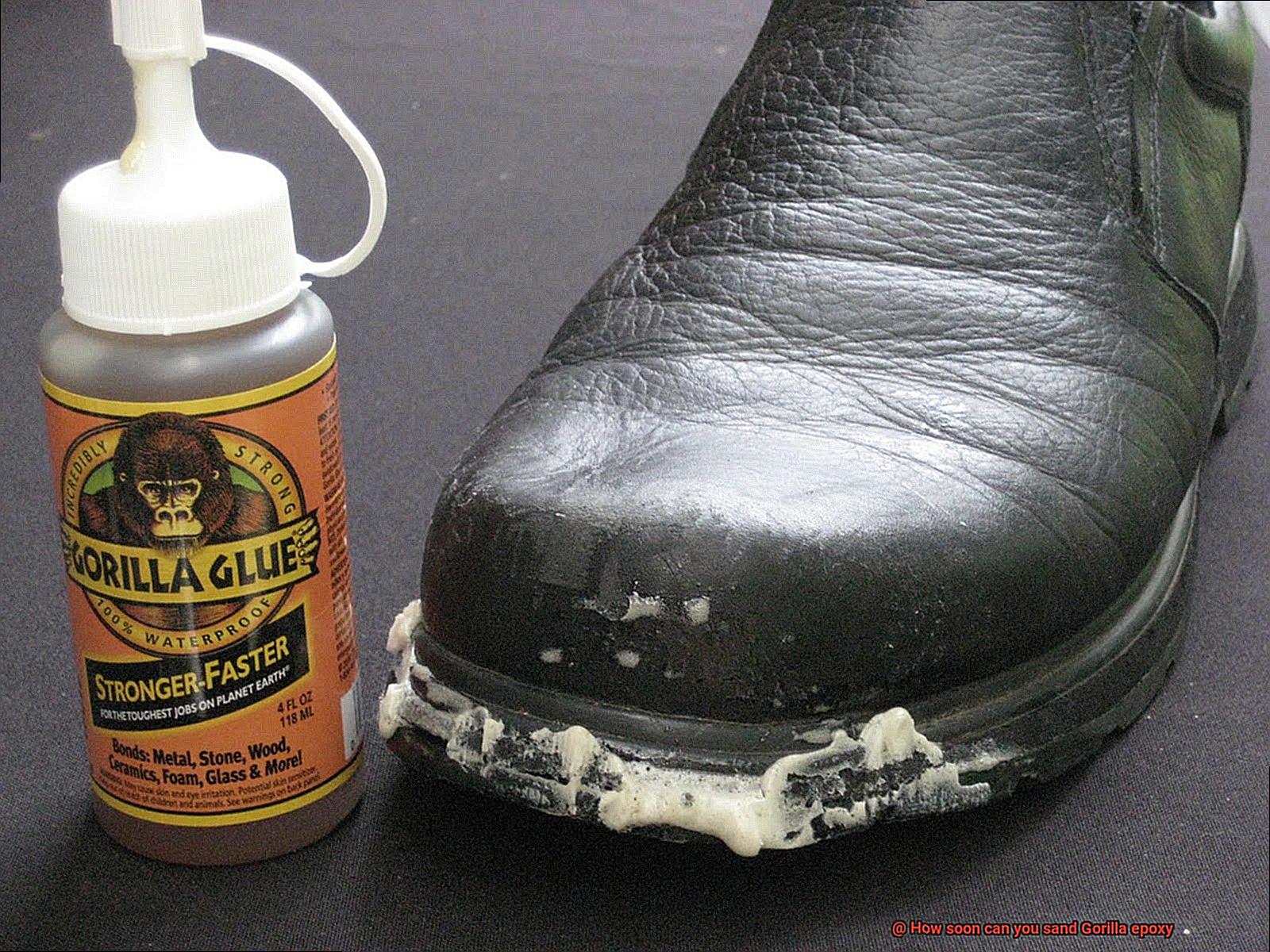
While sanding, avoid applying too much pressure as this may cause the epoxy to become uneven or even crack. Take your time and continue sanding until you achieve your desired level of smoothness.
After sanding, wipe down the surface with a clean cloth or rag to remove any dust or debris. You can also use a damp cloth if necessary to ensure the surface is clean.
To sum it up, here are some general guidelines for sanding Gorilla Epoxy:
- Allow the epoxy to cure completely before sanding
- Use fine-grit sandpaper (220 grit or higher)
- Wear protective gear while sanding
- Keep your sandpaper clean and free of debris
- Avoid applying too much pressure while sanding
- Take your time and continue until you achieve your desired level of smoothness
- Wipe down the surface with a clean cloth or rag after sanding
Benefits of Waiting at Least 72 Hours Before Sanding
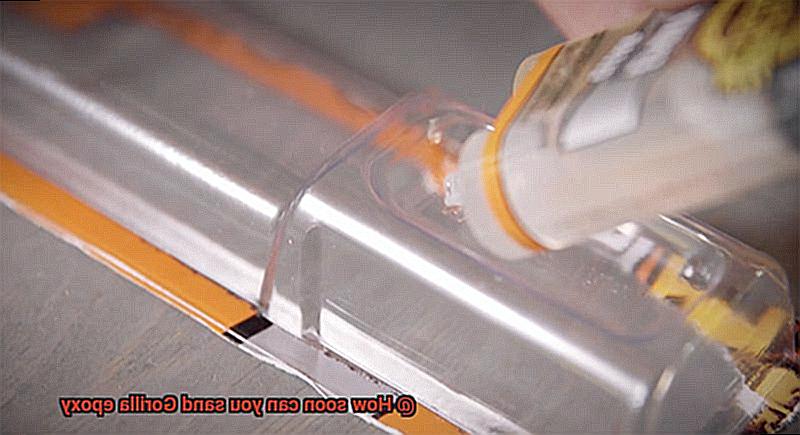
Hold on there, my friend. Waiting at least 72 hours before sanding can make all the difference in achieving a polished and smooth finish. Let’s explore why patience is key when working with Gorilla Epoxy.
Firstly, it’s important to remember that Gorilla Epoxy takes time to fully cure and harden. Even if the surface feels dry after a few hours, the epoxy can still be soft and pliable underneath. Sanding too soon can cause the epoxy to shift or move, resulting in an uneven surface or even damage to the bond. By waiting until the epoxy has fully cured, you’ll ensure that your project is stable and even.
Secondly, waiting at least 72 hours allows for any remaining solvents or moisture to completely evaporate from the epoxy. These substances can interfere with the sanding process and prevent a smooth finish. By allowing sufficient time for evaporation, you’ll be able to achieve a better result in the end. This is especially important when working on large or intricate projects, as it can take longer for the epoxy to fully cure.
Lastly, waiting also allows for any bubbles or imperfections in the epoxy to rise to the surface and pop on their own. If these imperfections are sanded down too soon, they can become trapped beneath the surface and create unsightly blemishes in the finished product. By being patient and giving it time, you’ll be able to avoid any unwanted blemishes and achieve a flawless finish.
Potential Risks of Sanding Too Soon
Before you grab the sandpaper, make sure that you’re not jumping the gun. Sanding too soon can lead to a host of potential risks that could ruin your project’s appearance. As an expert in this field, I am here to explain the potential risks of sanding Gorilla Epoxy too soon.
Firstly, it is important to understand that epoxy takes time to cure. Typically, it takes between 24-72 hours to fully cure based on temperature and humidity levels. Sanding the epoxy before it has fully cured can cause it to become rough, uneven, or even come off completely, resulting in a disappointing finish for your project.
Secondly, sanding too aggressively can cause further damage to your project. If the epoxy is still soft and pliable, sanding can cause it to come off in chunks, leaving an uneven surface. This will require additional time and resources to fix and can ultimately affect the final appearance of your project.
Lastly, sanding too soon can release harmful particles into the air that can be hazardous if inhaled. To protect yourself from these risks, it is recommended that you wear a mask or respirator when sanding Gorilla Epoxy.
To ensure a successful outcome for your project, it is best to wait until the epoxy has fully cured before attempting to sand it. If you’re unsure whether the epoxy has cured completely, take a little extra time instead of risking damage. Remember, patience is key when achieving a polished and professional finish for your Gorilla Epoxy project.
Taking Necessary Precautions When Sanding Gorilla Epoxy
Before you start sanding down that Gorilla epoxy, it’s important to take necessary precautions to ensure both your safety and the effectiveness of the process.
Firstly, it’s essential to exercise patience and allow the epoxy to fully cure before sanding. Rushing this step can lead to unsightly marks and release harmful particles into the air. It’s recommended to wait 72 hours after applying Gorilla epoxy for optimal results.
Once the curing process is complete, it’s time to gear up. Put on a dust mask, safety glasses, and gloves to shield yourself from any potential harm that could be caused by the dust and debris generated during the sanding process. Additionally, work in a well-ventilated area to avoid inhaling any toxic fumes.
Before sanding, take a moment to inspect the surface for bumps or imperfections that may require attention. Running your hand over the surface or shining a flashlight at an angle can help identify these areas.
When it comes to sanding itself, start with a fine-grit sandpaper at around 220 grit and gradually move up to 400 grit for a smoother finish. However, be cautious not to apply too much pressure or overheat the epoxy. Taking frequent breaks during the sanding process can help prevent this.
After sanding, wipe down the surface with a damp cloth or sponge to remove any dust or debris. For an added layer of protection and shine, consider applying a finishing product such as polish or wax.
xsvpAsSM7Do” >
Conclusion
In conclusion, a flawless and polished finish on your Gorilla epoxy project requires careful attention to detail, patience, and adherence to the manufacturer’s instructions. Rushing through this critical step can result in an uneven surface or even worse, damage to the bond. Therefore, understanding the factors that impact sanding times is crucial.
To achieve optimal results, it’s recommended to wait at least 24-72 hours before attempting to sand Gorilla epoxy fully. Taking proper safety precautions such as wearing gloves, goggles, and a mask is mandatory when sanding to prevent inhaling dust or particles.
When sanding Gorilla Epoxy, using fine-grit sandpaper (220 grit or higher), keeping your sandpaper clean and free of debris, avoiding applying too much pressure while sanding, taking your time until you achieve your desired level of smoothness are all essential steps. Afterward, wipe down the surface with a clean cloth or rag.
Waiting at least 72 hours before sanding allows for any remaining solvents or moisture to completely evaporate from the epoxy. Sanding too soon can cause the epoxy to shift or move resulting in an uneven surface or even damage to the bond.

